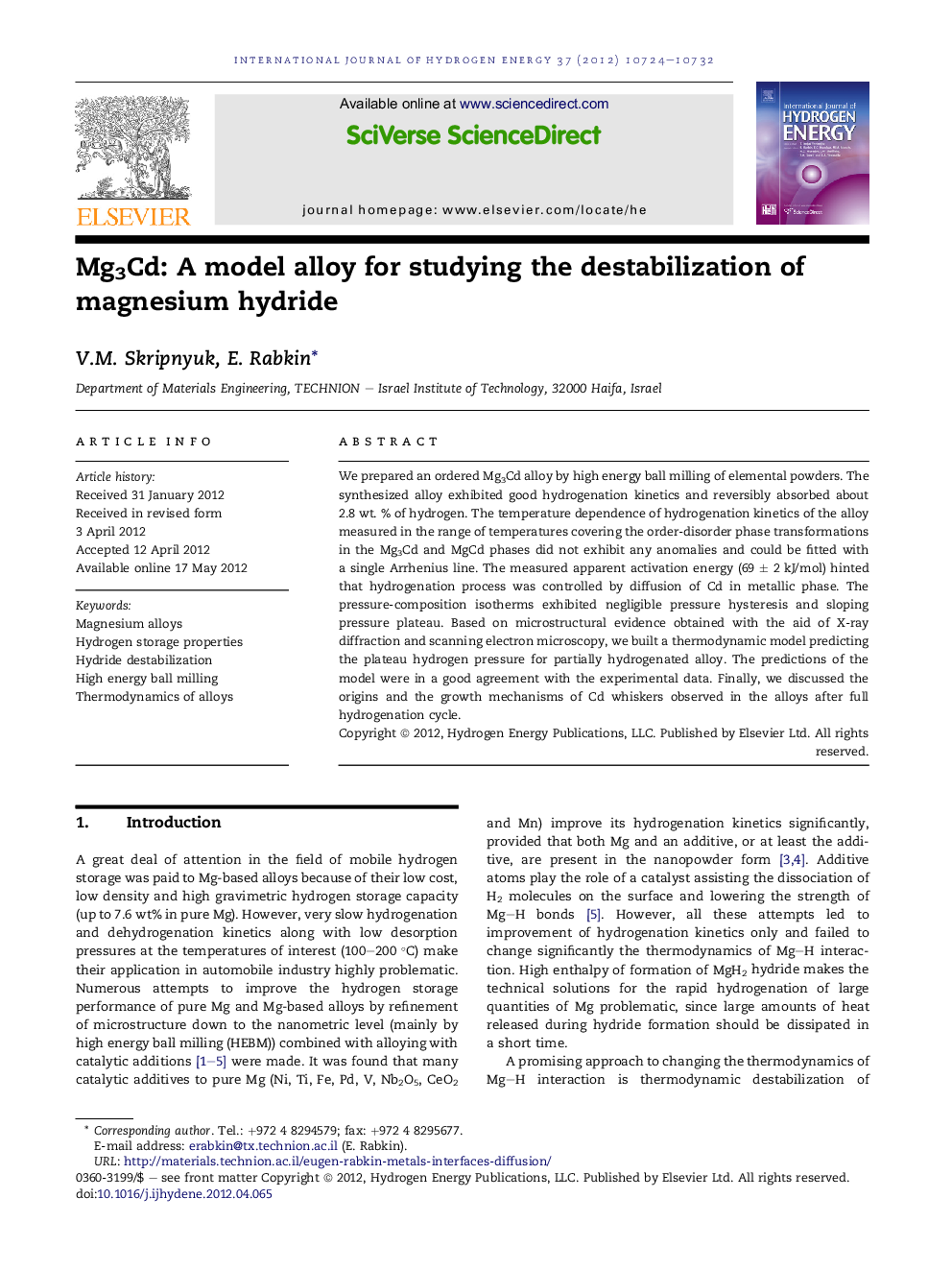| Article ID | Journal | Published Year | Pages | File Type |
|---|---|---|---|---|
| 1276354 | International Journal of Hydrogen Energy | 2012 | 9 Pages |
We prepared an ordered Mg3Cd alloy by high energy ball milling of elemental powders. The synthesized alloy exhibited good hydrogenation kinetics and reversibly absorbed about 2.8 wt. % of hydrogen. The temperature dependence of hydrogenation kinetics of the alloy measured in the range of temperatures covering the order-disorder phase transformations in the Mg3Cd and MgCd phases did not exhibit any anomalies and could be fitted with a single Arrhenius line. The measured apparent activation energy (69 ± 2 kJ/mol) hinted that hydrogenation process was controlled by diffusion of Cd in metallic phase. The pressure-composition isotherms exhibited negligible pressure hysteresis and sloping pressure plateau. Based on microstructural evidence obtained with the aid of X-ray diffraction and scanning electron microscopy, we built a thermodynamic model predicting the plateau hydrogen pressure for partially hydrogenated alloy. The predictions of the model were in a good agreement with the experimental data. Finally, we discussed the origins and the growth mechanisms of Cd whiskers observed in the alloys after full hydrogenation cycle.
► We synthesized ordered Mg3Cd alloy by high energy ball milling. ► The alloy reversibly absorbs 2.8 wt.% of hydrogen and exhibits fast kinetics. ► Order-disorder transformation does not affect kinetics of hydrogenation. ► Cd is rejected from the growing magnesium hydride into the metal phase. ► Thermodynamic model without any adjustable parameters fits experimental data.
